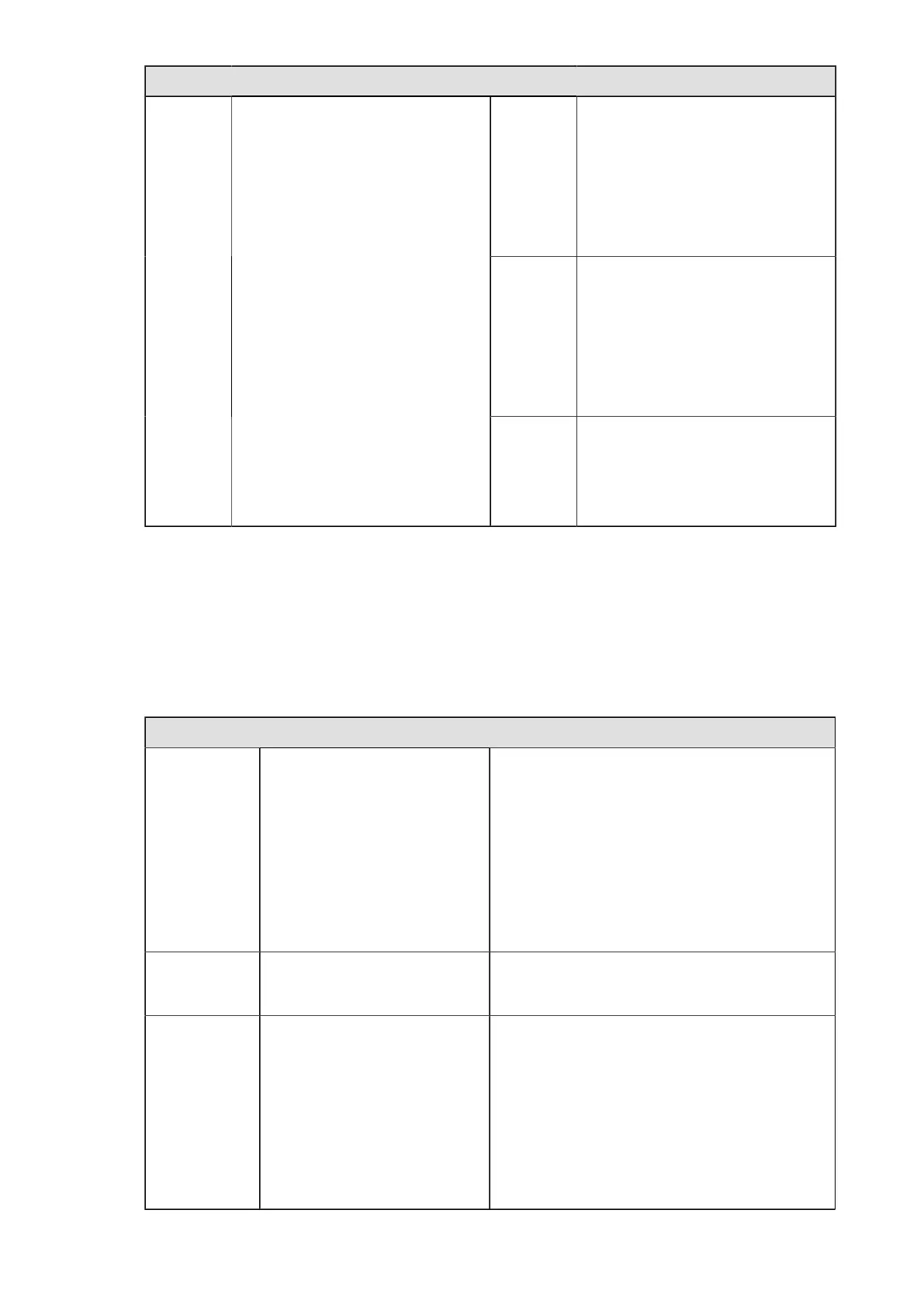412
EPC encode type parameter
a [Conventional format] SSCC96 code
conversion
Use the “one-character parameter
identifier”.
When the Company prefix/Serial
reference/Filter value is received,
and then converted to an SSCC96
compliant code, and written to the tag.
c [Conventional format] SGTIN96 code
conversion
Use the “one-character parameter
identifier”.
When the Company prefix/Serial
reference/Filter value is received, and
then converted to a GTIN96 compliant
code, and written to the tag.
z [Conventional format] Free mapping
Use the “one-character parameter
identifier”.
When data is written as is without
performing code conversion
Standard format
This is the extended format for the tag from IC chip manufacturer having over 96 bits EPC area.
<IP0>e: Write these parameters after specifying h.
<IP0>e: The order of the parameters after specifying h doesn’t matter.
Three-character parameter identifier
Gen 2 basic operation parameters (can be omitted)
pcw: PC rewrite The PC area contains length information for
controlling the number of digits of data to be recorded
to the EPC. You can change the number of digits of
the EPC data by specifying multiples of four from 4 to
124 in decimal code to this parameter.
Specifying this parameter is not necessary in
most cases because the length information is
written to the PC automatically by judging from the
data length specified by epc:, if this parameter is not
specified. (Maximum value of the length information
of PC is 124 digits.)
afi: AFI write data Specify the number from 000 to 1FF in HEX code.
Synthesize data together with current PC length
information and write.
epc: EPC write data Specify 4 to 124 digit number in HEX code
corresponding to the traditionally written data in the
EPC area.
Digits can be varied in multiples of four. When the
character string is longer than the digits specified
by pcw:, a parameter error occurs, and when the
character string is shorter, the blanks are filled with
zeros.
You may also use the space, tab, line feed in data
separator, but these codes will be skipped.

